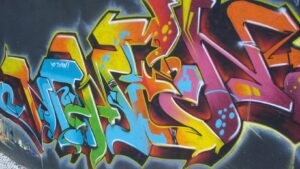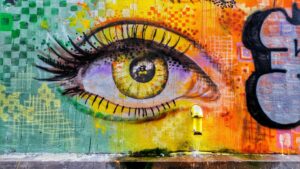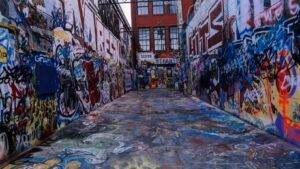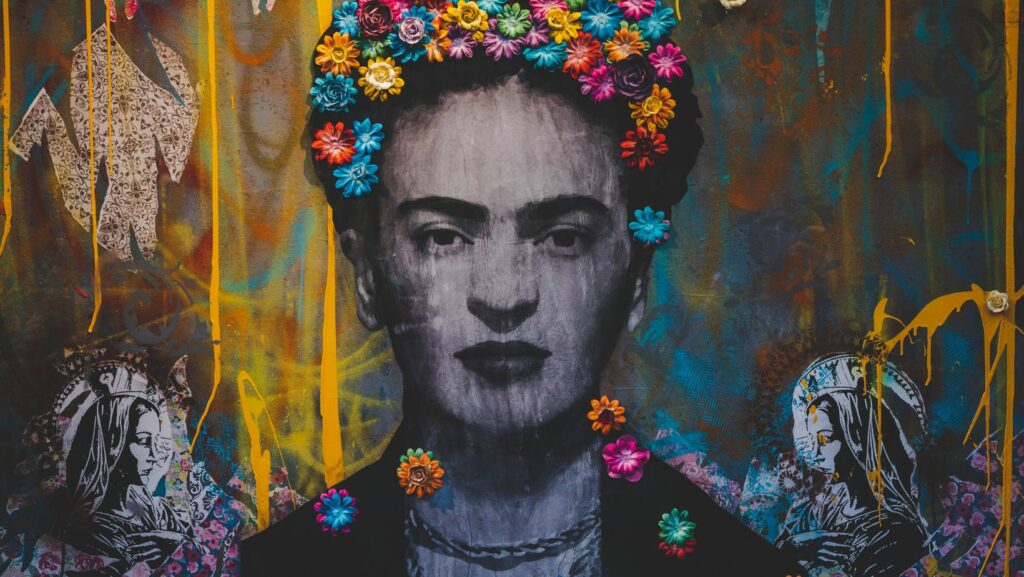Art:ozlttvs427e= Graffiti
Graffiti has long been a vibrant form of self-expression, transforming urban landscapes into dynamic canvases. What was once considered  mere vandalism has evolved into a respected art form, with cities worldwide embracing its colorful allure. From the bold tags of New York City subway cars to intricate murals on Berlin’s walls, graffiti tells stories that resonate with communities and challenge societal norms.
mere vandalism has evolved into a respected art form, with cities worldwide embracing its colorful allure. From the bold tags of New York City subway cars to intricate murals on Berlin’s walls, graffiti tells stories that resonate with communities and challenge societal norms.
As an art form, graffiti blends creativity with rebellion, offering artists a unique platform to voice their perspectives. It’s not just about spray cans and stencils; it’s about making a statement that captures the essence of a place and time. With its roots in hip-hop culture, graffiti has grown into a global phenomenon, influencing everything from fashion to advertising.
In recent years, the line between street art and fine art has blurred, with galleries and museums showcasing graffiti’s raw energy. This shift highlights its cultural significance and enduring appeal.
The Evolution Of Art Graffiti
Art graffiti has transformed significantly over the decades, evolving from illicit street markings to celebrated expressions of culture. In the 1970s, urban artists in cities like New York City began using spray paint to cover subway cars and building walls. This marked the beginning of graffiti as a prominent form of communication and social commentary.
The 1980s brought increased attention to graffiti, with artists like Jean-Michel Basquiat and Keith Haring gaining mainstream fame. Their work highlighted the artistic potential within graffiti, propelling it into galleries and art shows. This period marked a shift in perception as people began recognizing graffiti as a legitimate art form rather than mere vandalism.
In the 1990s and early 2000s, street artists like Banksy and Shepard Fairey pushed the boundaries further by incorporating political messages and social critiques into their designs. These artists leveraged graffiti’s public platform to reach wider audiences and foster dialogue on pressing issues.
Today, digital technology plays a significant role in graffiti’s evolution, offering new tools and platforms for artists. Social media enables artists to share their work globally, garnering appreciation from diverse audiences. Additionally, innovations in virtual reality and digital art allow artists to explore graffiti in new dimensions, further enhancing its reach.
Art graffiti’s evolution illustrates its dynamic nature, mirroring societal changes while shaping urban landscapes worldwide.
Styles And Techniques In Art Graffiti
Art graffiti has evolved into a diverse combination of styles and techniques. Each style offers unique expressive possibilities, creating an array of visual impacts in urban environments.
Tagging And Throw-Ups
Tagging and throw-ups are foundational techniques in graffiti. Tagging involves writing a stylized signature, often using a single color for speed and simplicity. Throw-ups use more elaborate forms with two or more colors, creating bubble-like letters for increased visibility.
Stencils And Murals
Stencils help artists produce precise designs by spraying through pre-cut templates. This technique is favored for repetitive images and intricate patterns. Murals, on the other hand, allow for large, detailed works, transforming entire walls into expansive canvases that often convey powerful messages or narratives.
3D And Illusions
3D techniques in graffiti create depth and perspective, making images appear to leap off walls. Illusions use shading and angles to trick the eye, adding complexity and intrigue to street art. These styles push creative boundaries, engaging viewers in unique visual experiences.
Cultural And Social Impact Of Art Graffiti
Art graffiti significantly influences cultural and social domains, acting as a tool for communication and transformation in urban settings.
 Graffiti often serves as a medium for political expression, allowing artists to convey powerful messages. Artists like Banksy use graffiti to critique societal issues, communicate discontent, and challenge authority. They blend art with activism, fostering dialogue on topics ranging from environmental concerns to social justice. This form of art becomes a compelling vehicle for highlighting marginalized voices and questioning mainstream narratives.
Graffiti often serves as a medium for political expression, allowing artists to convey powerful messages. Artists like Banksy use graffiti to critique societal issues, communicate discontent, and challenge authority. They blend art with activism, fostering dialogue on topics ranging from environmental concerns to social justice. This form of art becomes a compelling vehicle for highlighting marginalized voices and questioning mainstream narratives.
Graffiti can play a vital role in revitalizing communities by transforming neglected areas into vibrant cultural spaces. Murals and art installations attract attention, instilling pride and fostering tourism. Cities often engage graffiti artists in community projects to beautify urban landscapes and deterring illegal graffiti by promoting creativity. This active participation nurtures a sense of belonging and solidarity within communities.

